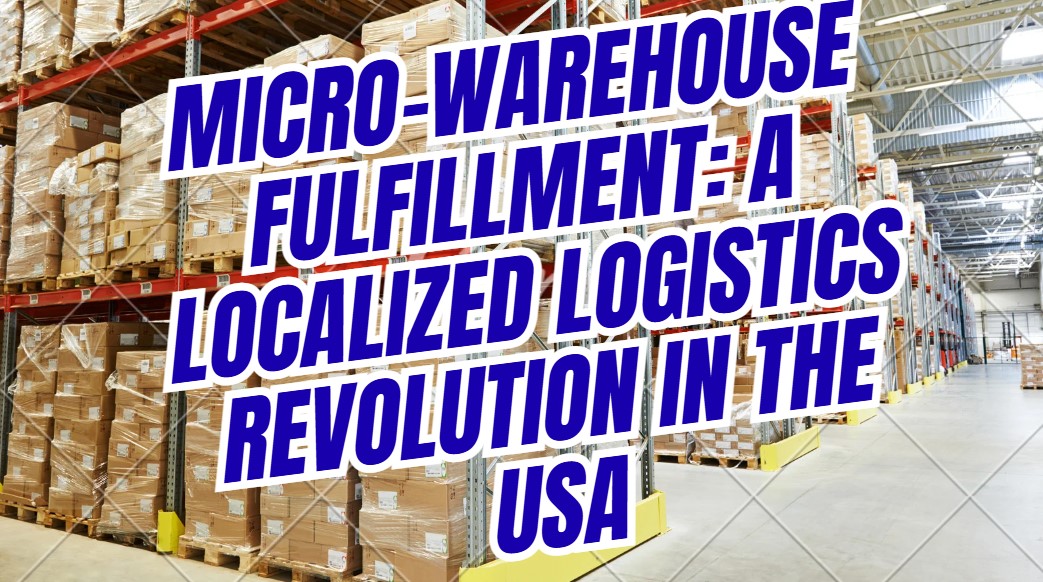In the wake of skyrocketing e-commerce demand, especially post-pandemic, American consumers have grown accustomed to ultra-fast deliveries—often within hours. This shift has put enormous pressure on small and mid-sized online retailers who lack Amazon-scale infrastructure. Enter the micro-warehouse fulfillment service, a rapidly growing logistics solution that’s democratizing same-day delivery.
What Is a Micro-Warehouse Fulfillment Service?
A micro-warehouse is a small, strategically located storage facility—often within urban centers or residential areas—that stores popular, fast-moving products close to the end consumer. Unlike massive distribution hubs in remote industrial zones, these are compact, tech-enabled spaces designed to reduce last-mile delivery time and cost.
A micro-fulfillment service acts as a third-party logistics (3PL) provider, managing the storage, picking, packing, and delivery of goods for e-commerce sellers—especially local or niche brands.
Why It’s a Powerful Business Idea in 2025
1. E-Commerce Is No Longer Optional
With more than 80% of Americans shopping online regularly, customers now expect delivery within a day, or even hours. Micro-warehousing helps smaller businesses compete without massive investment.
2. Hyperlocal Focus
The U.S. is seeing a shift toward “buying local.” Micro-warehouses positioned in cities like Austin, Denver, or Seattle allow local brands to deliver faster than national giants.
3. Sustainability Bonus
Shorter delivery routes mean fewer emissions. Companies using bikes or electric vans for local drops can market their eco-friendly practices.
4. Commercial Real Estate Opportunity
Post-COVID, malls and office spaces have vacancies. These spaces can be converted into micro-fulfillment centers at lower leasing costs.
How the Business Works
Step 1: Build the Tech Stack
Invest in inventory management software, barcode systems, route optimization tools, and integration with e-commerce platforms like Shopify, Etsy, and WooCommerce.
Step 2: Lease Micro-Spaces in Key Neighborhoods
Look for 500 to 5,000 sq. ft. spaces in dense, high-demand zip codes. Old convenience stores or mini-malls work well.
Step 3: Partner with Local Brands
Onboard sellers looking for faster fulfillment in your area. Offer them warehousing, same-day delivery, and returns handling.
Step 4: Hire Local Couriers or Use Gig Workers
Use a team of trained delivery drivers or partner with gig platforms like DoorDash, Roadie, or Uber for the last-mile drop-offs.
Step 5: Offer Add-Ons
Sell value-added services like gift wrapping, cold storage (for perishables), or on-demand kitting (combining products into bundles).
Target Customers
- Small E-Commerce Brands
- Local Artisans
- Subscription Box Companies
- Perishable Goods Sellers (e.g., bakery or organic produce brands)
- Health & Beauty Product Sellers
Revenue Model
- Monthly Storage Fees (per shelf or SKU)
- Fulfillment Fees (per order or per item)
- Delivery Fees (flat rate or distance-based)
- Add-On Services (labeling, kitting, returns)
Challenges to Expect
- Zoning & Permits: Not all urban areas allow warehousing.
- Inventory Accuracy: Real-time tracking is crucial to avoid over-promising.
- Courier Management: Maintaining quality, reliability, and branding with gig workers can be tough.
- Scalability: Profit margins can be slim if not well-automated.
Success Case Example
ShipWell MicroHub – Brooklyn, NY
A 1,200 sq. ft. micro-warehouse servicing over 35 local brands, delivering same-day via electric scooters. ShipWell grew its revenue by 250% in 12 months by combining ultra-fast delivery and real-time inventory sync with Shopify stores.
Final Thoughts
The rise of micro-warehousing is a reflection of the evolving American consumer—a desire for speed, local support, and personalized service. As the logistics landscape continues to fragment, micro-fulfillment services represent a profitable niche for entrepreneurs ready to think small to win big.
